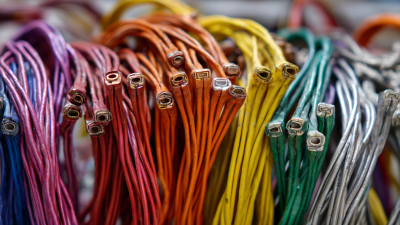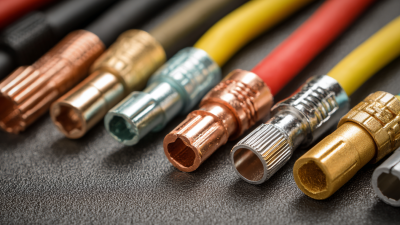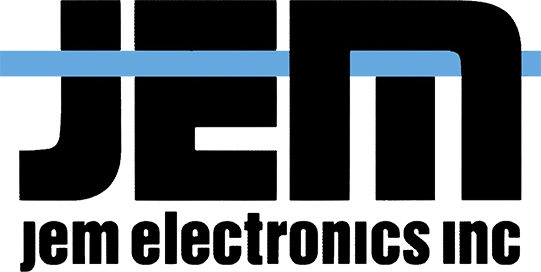Blog
Essential Checklist for Global Buyers to Navigate the Wire and Cable Industry Trends and Standards
In the ever-evolving landscape of the wire and cable industry, global buyers face the crucial task of navigating complex trends and standards that can significantly impact their procurement strategies. According to a recent market report by Grand View Research, the global wire and cable market is expected to reach USD 303.48 billion by 2025, growing at a compound annual growth rate (CAGR) of 4.9%. This growth is driven by increasing demand across various sectors, including telecommunications, construction, and renewable energy. However, understanding the intricate factors influencing this market—such as technological advancements, regulatory frameworks, and supply chain dynamics—is imperative for making informed purchasing decisions. This essential checklist aims to equip global buyers with the knowledge and tools necessary to effectively navigate the wire and cable industry's prevailing trends and standards, ensuring their investments align with future market developments.

Understanding the Key Trends Shaping the Wire and Cable Industry Today
In today's rapidly evolving wire and cable industry, understanding the key trends is essential for global buyers aiming to make informed purchasing decisions. One significant trend is the increasing demand for sustainable and eco-friendly products. Manufacturers are now focusing on reducing their environmental impact by adopting greener materials and processes. For instance, the shift towards recyclable insulation materials and energy-efficient manufacturing practices not only meets regulatory requirements but also appeals to environmentally-conscious consumers and businesses.
Another trend reshaping the wire and cable industry is the advancement in smart technology. The integration of IoT (Internet of Things) capabilities into wire and cable products enhances their functionality and performance. Buyers can now explore options that offer real-time monitoring, predictive maintenance, and improved connectivity. This trend is particularly relevant for industries such as telecommunications and energy, where the demand for high-speed data transmission and reliable power solutions is paramount. Understanding these trends allows buyers to select products that align with future industry standards and operational needs, positioning them for growth in a competitive market.

Identifying and Complying with Global Standards for Wire and Cable Products
In the dynamic wire and cable industry, understanding and complying with global standards is crucial for buyers aiming to navigate the complexities of international trade. According to a report by MarketsandMarkets, the global wire and cable market is projected to grow from USD 193.5 billion in 2022 to USD 247.1 billion by 2027, highlighting the increasing demand for high-quality products aligned with established standards. Buyers need to be aware of standards such as IEC 60228 for conductors, which sets minimum requirements for construction, performance, and safety. Compliance not only ensures product reliability but also enhances market acceptance across different regions.
Furthermore, the International Electrotechnical Commission (IEC) plays a pivotal role in defining the standards for wire and cable products across various applications, including power transmission and telecommunication. For instance, the IEC 60502 standard relates to cables for power systems with nominal voltages, providing guidelines that help maintain safety and efficiency. The recent study from Technavio indicates that adherence to international standards can lead to improved supply chain efficiencies and reduced costs, making it imperative for global buyers to integrate these standards into their procurement strategies. By prioritizing compliance, buyers can enhance their competitive edge in an increasingly regulated market environment.
Navigating Supply Chain Challenges in the Wire and Cable Sector
As global buyers navigate the wire and cable industry, the evolving supply chain challenges highlight the need for strategic planning. The upcoming budget for 2025-2026 presents an essential opportunity for stakeholders in India’s cable industry to address critical issues, such as soaring raw material costs, labor shortages, and technological advancements. With projections indicating a considerable rise in copper wire prices, driven by demand and supply challenges, buyers must prepare for fluctuating costs in their procurement strategies.
In Europe, as countries like Germany strive for energy transition by 2045, the power grid's demands are escalating. Reports show that the market for wire and cable materials is set to grow significantly, fueled by the increasing share of renewable energy sources. That being said, the necessity for enhanced national production capacities is pressing to support grid expansion. Furthermore, the geopolitical landscape, particularly the implications of potential tariffs on copper imports, is reshaping global market dynamics. Suppliers and buyers alike must remain vigilant and adaptable to these fast-changing conditions to sustain growth and efficiency in their operations.
Wire and Cable Industry Trends (2023)
This bar chart illustrates the increasing demand for various wire and cable types over the past year, reflecting the trends in the wire and cable industry. The data shows the rise in demand for renewable energy cables and telecommunication wires, highlighting the shift towards greener technologies and improved connectivity.
Essential Quality Assurance Practices for Wire and Cable Buyers
Quality assurance is paramount for wire and cable buyers looking to thrive in a competitive market. One essential practice is conducting thorough supplier assessments. This involves evaluating suppliers based on their certifications, production capabilities, and past performance. Buyers should verify that suppliers adhere to international standards like ISO 9001, ensuring that the products meet quality expectations and regulatory requirements.
Additionally, implementing stringent testing protocols is critical. Buyers should establish a comprehensive testing regime that examines insulation resistance, tensile strength, and electrical conductivity, among other key performance indicators. Collaborating with third-party testing facilities can add an extra layer of assurance, confirming that the products not only meet industry standards but also perform reliably in real-world applications. Staying proactive in quality assurance not only mitigates risks but also fosters long-term partnerships with trusted suppliers.
Leveraging Technology for Informed Purchasing Decisions in the Wire and Cable Market
In today's rapidly evolving wire and cable industry, leveraging technology is essential for global buyers aiming to make informed purchasing decisions. Advanced software tools and platforms provide essential insights into market trends, such as fluctuations in copper prices and shifting consumer demands. By utilizing data analytics and predictive modeling, businesses can forecast requirements more accurately and optimize their inventory management strategies. This technological integration not only streamlines operations but also enhances overall efficiency, allowing companies to stay competitive in a crowded marketplace.
Furthermore, the use of digital channels for sourcing materials has transformed traditional procurement methods. Online marketplaces and e-commerce platforms offer buyers instant access to a range of suppliers and products, facilitating price comparisons and quality assessments. Virtual communication tools enable seamless interaction between buyers and manufacturers, breaking down geographical barriers and fostering more collaborative relationships. By embracing these technological advancements, global buyers can navigate complexities within the wire and cable industry with greater confidence, ensuring they align their purchasing strategies with current standards and trends.

Related Posts
-

10 Best Industrial Wire Trends You Should Know in 2023
-

2025 Market Insights: 5 Essential Tips for Succeeding in Best Wire Harness Assembly
-

Innovative Electrical Harness Solutions for Automotive Challenges in Global Supply Chains
-

The Ultimate Guide to Choosing the Right Electrical Wire Connector for Your Projects
-

Comparing Wire Harness Assemblies: Which Cable Solutions Meet Industry Standards Best?
-

Ultimate Guide to Cable and Harness Assembly Solutions for Global Procurement Success
© 2023 JEM Electronics, Inc. – United States Cable Assembly. All rights reserved.

